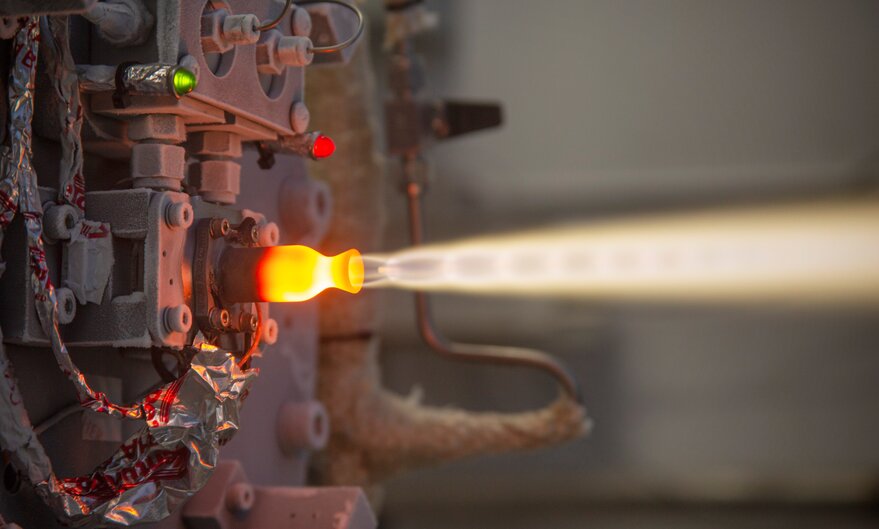SAN FRANCISCO – Frontier Aerospace, a small Simi Valley, California, company, has completed the design of attitude control thrusters developed with NASA and Astrobotic Technologies for deep space missions.
“We are well on our way to qualifying both 150 and 10 [pounds of thrust] engines for Astrobotic’s near-term Peregrine lunar lander mission,” Frontier Aerospace announced Nov. 2 on LinkedIn.
Frontier Aerospace has been developing and testing rocket engines fueled by nitrogen oxides mixed with monomethyl hydrazine propellants through a NASA program called Thruster for the Advancement of Low-temperature Operation in Space (TALOS).
The TALOS program is aimed at reducing space mission costs by developing propulsion technologies to operate at a wide range of temperatures, from -40 to 27 degrees Celsius. In contrast, existing liquid propulsion thrusters operate in a far more limited temperature range, from about 7 to 21 degrees Celsius, according to an Aug. 21 NASA news release.
Preventing conventional thrusters from freezing “places enormous demand on spacecraft power and mass budgets, driving up launch and spacecraft cost, and limiting available payload capacity,” Bryce Dabbs, Frontier Aerospace Vice President of Finance and Operations, told SpaceNews by email. “The ability to operate at cold temperatures reduces power demand and improves cost efficiency.”
Frontier Aerospace completed critical design review in late October of the TALOS thrusters. “We are now in the process of fabricating qualification test hardware for one of NASA’s Artemis flights on Peregrine, which is set to fly on [United Launch Alliance’s first Vulcan rocket,” Dabbs said.
Frontier Aerospace won a $1.9 million NASA Tipping Point award in 2018 to flight qualify thrusters for Astrobotic’s first Peregrine lunar lander flight, now scheduled for 2021. The Frontier Aerospace thrusters will be integrated in the propulsion system developed by Dynetics of Huntsville, Ala., to propel Peregrine through trans-lunar injection, lunar orbit insertion decelerations, a breaking maneuver and powered descent to the lunar surface.
Frontier Aerospace president Jim McKinnon began to focus on miniature thrusters in the late 2000s, when the Missile Defense Agency sought propulsion for missile interceptors. At the time, McKinnon led an engineering research and development firm called Frontier Engineering.
Since McKinnon established Frontier Aerospace in 2014, the company has been developing bipropellant thrusters for spacecraft and lunar landers.
“For decades, there have been limited breakthroughs within the in-space propulsion market,” Andy Ferng, Frontier Aerospace vice president and program manager, said by email. “We’re fortunate to have a team of relentless innovators focused on pushing the limits of space propulsion.”
